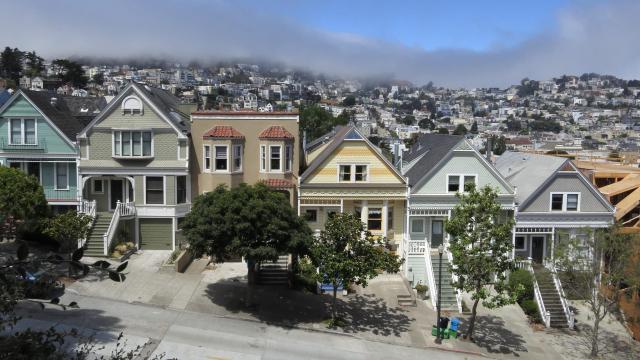The race to electrify every house in the U.S. just got a jolt courtesy of California. The most populous state in the country has passed new energy codes that incentivise electric appliances and efficient heating and cooling systems, a move that could wind down the use of fossil fuels in buildings.
The codes approved by the California Energy Commission will affect all new residential construction and some businesses, including motels, medical offices, retail and grocery stores, and restaurants among others. The energy codes are updated on three-year cycles. When we last checked in on them in 2018, they were updated with a mandate to include rooftop solar on all new construction (albeit a mandate that was most likely to benefit rich folks). The new codes are focused on bringing energy-efficient appliances and phasing out gas hookups for homes in the Golden State.
“This is the first statewide building code across the country that strongly incentivizes all-electric construction,” said Denise Grab, the manager of the Rocky Mountain Institute’s carbon-free building team. “In fact, that the last code there actually some disincentives to electrify. This is a big step forward.”
The new codes incentivise electrification by requiring all new construction to be electric-ready. That means even if a developer wants to install gas stoves, they need to also install all the wiring for a home to switch to an electric or induction one. The code also requires better ventilation for gas appliances and the attendant indoor air pollution. It’s also handy given the global pandemic and the increasingly dire wildfire smoke wrought by climate change. These two rules act as both carrots and sticks that work in favour of electrification and against natural gas, the use of which worsens indoor air quality. Cities across the state have also led the charge globally to ban new gas hookups, further constricting the use of a toxic substance to heat homes and cook meals.
“You avoid building out a whole bunch of new infrastructure that can become something stranded assets,” Grab said while also noting that kids who grow up in households with gas stoves are up to 42% more likely to suffer from asthma.
Perhaps the biggest tweak to the codes, though, is the inclusion of heat pumps as the baseline standard for space and water heating. Despite their name, heat pumps can really do everything when it comes to HVAC, providing both heating and cooling by using the ground or air outside the home to keep things comfortable inside. They can also heat water. They also run on electricity rather than fossil fuels. They are, in short, the bomb.
“Heat pumps are amazing devices,” Grab said.
Including them in the baseline standard means that heat pumps are considered part of the average new home in California. Builders can meet that standard either by installing heat pumps in homes or installing furnaces or air conditioners that emit greenhouse gases while upping energy efficiency in other parts of the home — say, by installing super-efficient windows — to stay within code guidelines.
“The baseline … strongly incentivizes builders to include either a heat pump water heater or an air source heat pumps for heating,” Grab said. “That’s crucial. That really, really changes the incentives in the economics for these builders to make it even more attractive to to go all electric.”
These code upgrades will be sent to the state’s Building Standards Commission, which a spokesperson for the Energy Commission told the New York Times has never rejected the codes approved by the energy group. Assuming they get the signoff, they’ll go into effect in 2023 to lower the carbon footprint of new construction in California. The codes also apply to “substantial” renovations. California’s housing stock accounts for nearly 70% of the state’s electricity use and 25% of its greenhouse gas emissions. Those older buildings don’t fall under the code and point to an area where upgrades are needed. Grab said that new is cheaper to build all-electric. Energy-efficient, and all-electric retrofits to the millions of older homes in California can often be more costly upfront while savings accrue over the long term. For people without the economic means, that can make a huge barrier to entry, something the state will likely need to navigate to meet its climate goals.
“You have to figure out how to help support people in the transition for lower-income folks,” Grab said. “We can get there, and we need to get there. We really do need to stop burning fossil fuels.”
